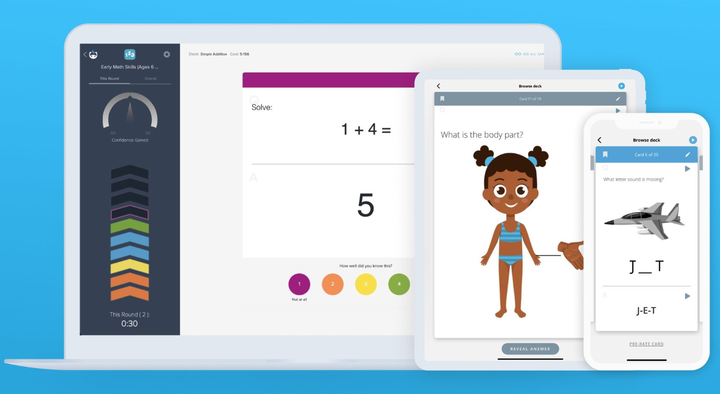
Combining OER & MOOCs for a Custom Curriculum
A New Way to Learn
Education is changing. Fast. More people than ever are learning online — not just for hobbies, but to upskill, switch careers, or even replace traditional education paths. Among the most powerful tools out there are Open Educational Resources (OER) and Massive Open Online Courses (MOOCs). Used together, they allow anyone to build a learning path that fits their goals, interests, and pace.
Whether you’re looking to deepen your knowledge in a subject or pivot professionally, combining OER and MOOCs offers flexibility, affordability, and control over what and how you learn. In this blog post, we’ll break down why this approach works, how to do it well, and what to avoid along the way.
Why It Matters: The Rise of Self-Directed Learning

In a world where information is at your fingertips, the traditional education model isn’t the only way forward. People are moving away from rigid degree programmes and embracing hybrid online learning models.
With OER (freely available learning resources like textbooks, videos, and modules) and MOOCs (online courses often hosted by universities or learning platforms), you can design a custom curriculum that’s entirely tailored to your personal and professional goals.
This approach matters because:
- Cost should not be a barrier to high-quality education.
- Time flexibility is key for adult learners and professionals.
- Learning on your terms builds stronger engagement and better outcomes.
Key Benefits of the OER-MOOC Combo
1. Customisable Learning Paths
With thousands of resources to choose from, you can build a programme that matches your interests precisely. For example, if you’re into data science, you might combine an OER statistics textbook with a MOOC in machine learning.
2. Low-Cost or Free Access
Most OERs are completely free, and many MOOCs are free to audit. Even if you opt for certification, it’s often far more affordable than traditional education.
3. Learn at Your Own Pace
OERs are accessible anytime, and many MOOCs are self-paced. You control your schedule — ideal for those juggling work, family, or other commitments.
4. Diverse Formats for All Learners

From PDFs and videos to podcasts and interactive quizzes, the content caters to various learning preferences. This mix keeps learning engaging and supports better retention.
5. Immediate Application of Knowledge
Since you’re selecting content that’s relevant to your goals, you’re more likely to apply what you learn in real-world contexts — whether at work, in a side project, or a freelance role.
How to Build Your Own Curriculum with OER and MOOCs
Step 1: Define Clear Goals
Before diving into content, ask yourself:
- What skill or subject do I want to master?
- Is there a job or role I’m aiming for?
- What level of expertise do I already have?
This helps you filter resources and design a focused learning path.
Step 2: Research and Curate Quality Materials
Use trusted OER repositories like:
- OER Commons
- MIT OpenCourseWare
- OpenLearn by The Open University
For MOOCs, try:
- Coursera
- edX
- FutureLearn
Look for content created by reputable universities, educators, or subject-matter experts.
Step 3: Map Out Your Learning Schedule
Structure your curriculum by topic or skill level. Include:
- Start and end dates for each course/module
- Weekly goals or learning outcomes
- Time estimates for each resource
This helps maintain consistency and progress.
Step 4: Blend Formats for Richer Learning
Mix and match:
- OER for deeper understanding (e.g. open textbooks, lecture slides)
- MOOCs for guided instruction and peer discussion
- YouTube or Podcasts for real-world context or case studies
This blend creates a well-rounded experience.
Additional Expert Tips & Common Mistakes to Avoid
Expert Tips
- Set realistic learning goals: It’s easy to overcommit. Start small and scale up once you’ve built a habit.
- Engage with MOOC communities: Discussion forums are full of insights, study groups, and job leads. Don’t skip them.
- Revisit and revise: Update your plan based on what’s working and what isn’t. Learning should be dynamic, not static.
Common Mistakes
- Treating it like traditional education: You don’t need to cover everything. Focus on what serves your goal.
- Jumping between too many platforms: Stick with 2–3 trusted sources. Too much variety can lead to burnout or inconsistency.
- Ignoring assessment: Many MOOCs include quizzes and assignments. They’re optional but hugely helpful in reinforcing knowledge.
Advanced Insights and Expert Recommendations
Use Microcredentials Wisely
Some MOOCs offer microcredentials or specialisations. These are useful if you want proof of learning or something to add to your CV or LinkedIn. However, only invest if the credential is recognised in your industry or if it helps achieve your specific goal.
Track Your Progress
Use tools like:
- Trello or Notion for tracking modules
- Google Sheets for planning and reviewing
- Calendar reminders for scheduled learning blocks
This turns your custom curriculum into a project you can manage and measure.
Go Beyond Passive Learning
Try teaching what you’ve learned — start a blog, make YouTube videos, or mentor others. Teaching forces you to truly understand and retain knowledge.
Conclusion: Take Charge of Your Learning Journey

Designing your own curriculum with OER and MOOCs isn’t just possible — it’s powerful. It gives you ownership over what you learn, how you learn it, and why you’re learning it.
With clear goals, trusted resources, and the right balance between structure and freedom, you can build a learning experience that’s truly your own.
Start today — browse an OER platform, sign up for a MOOC, and sketch out your first learning sprint. Education doesn’t have to be expensive or rigid. With the right approach, it can be flexible, fun, and completely personalised.
What are you waiting for? Let us know your learning goals or favourite resources in the comments. Share this with a friend who’s curious about learning on their own terms — and don’t forget to subscribe for more practical learning tips.


